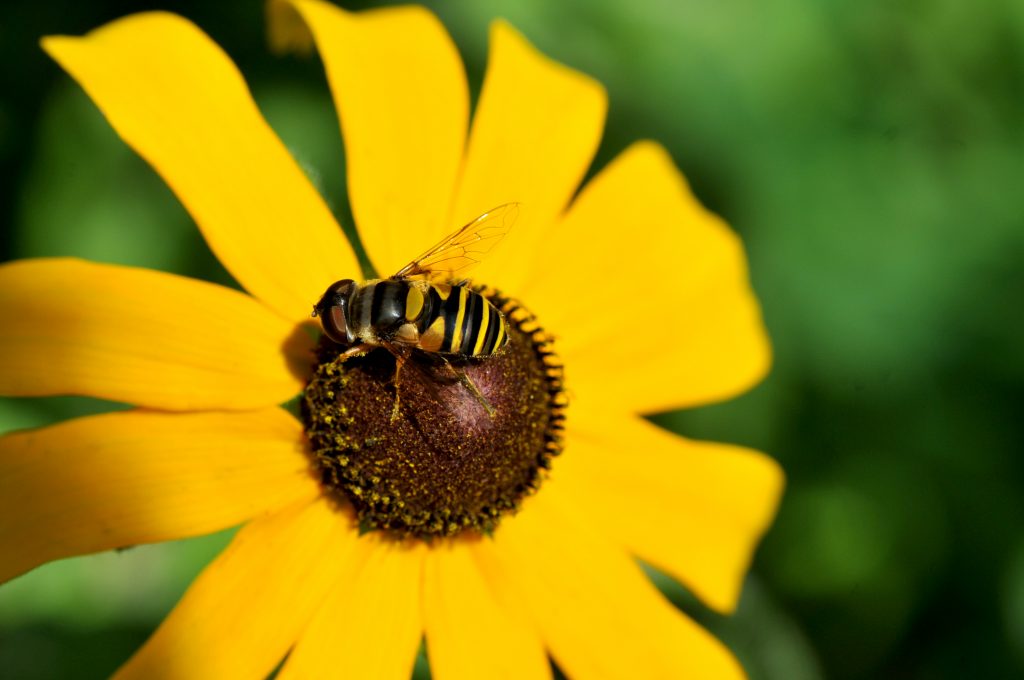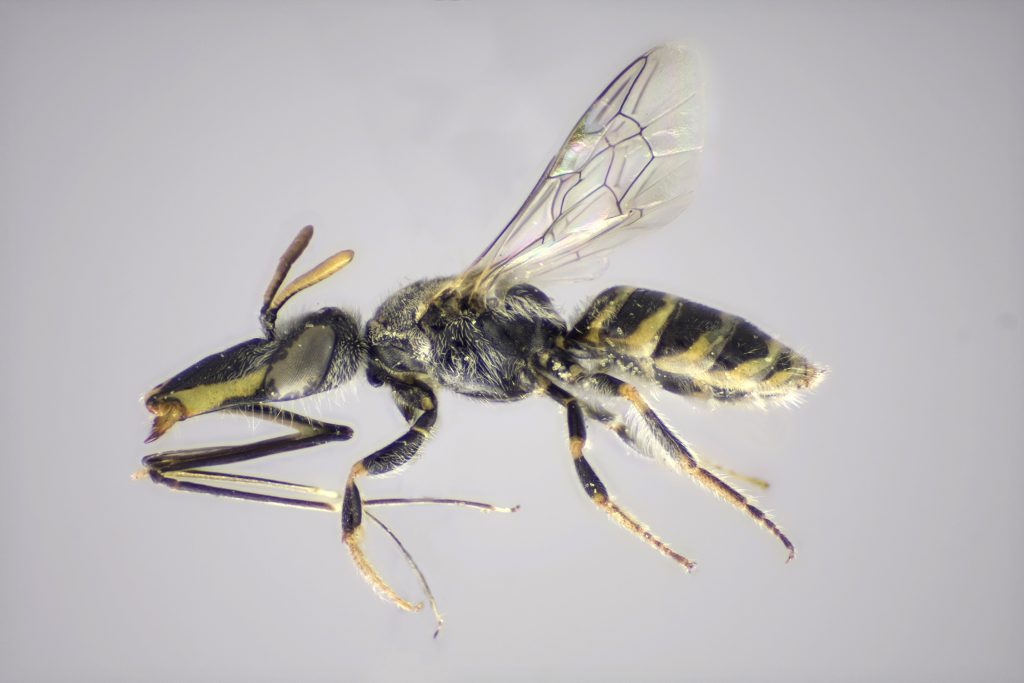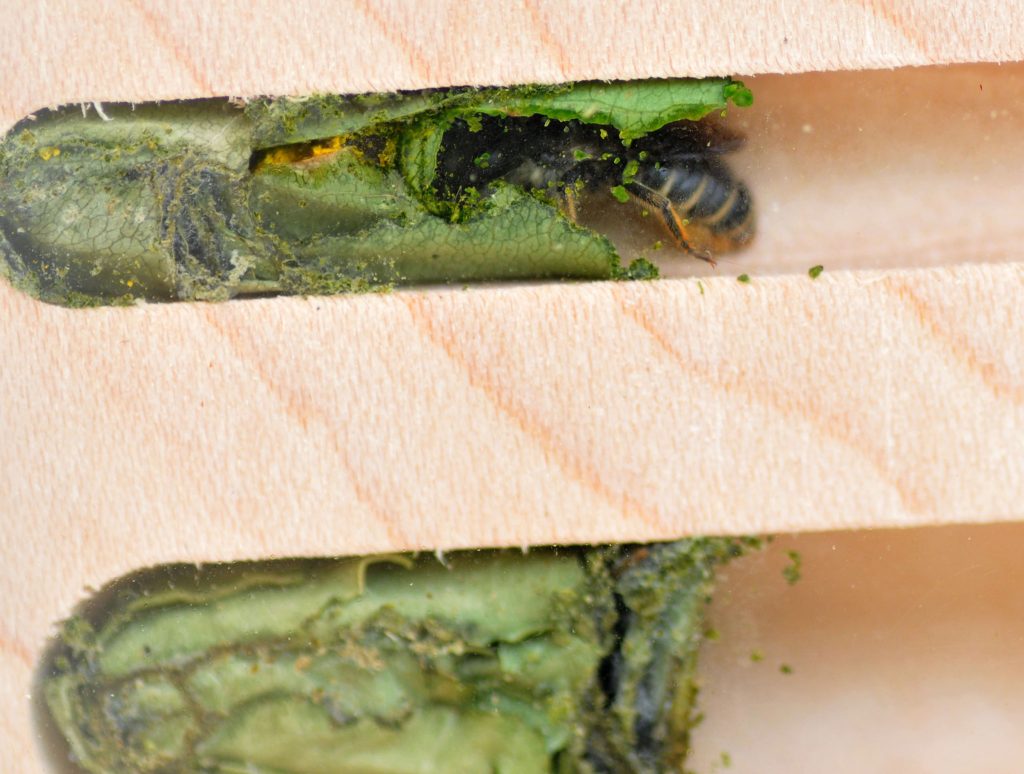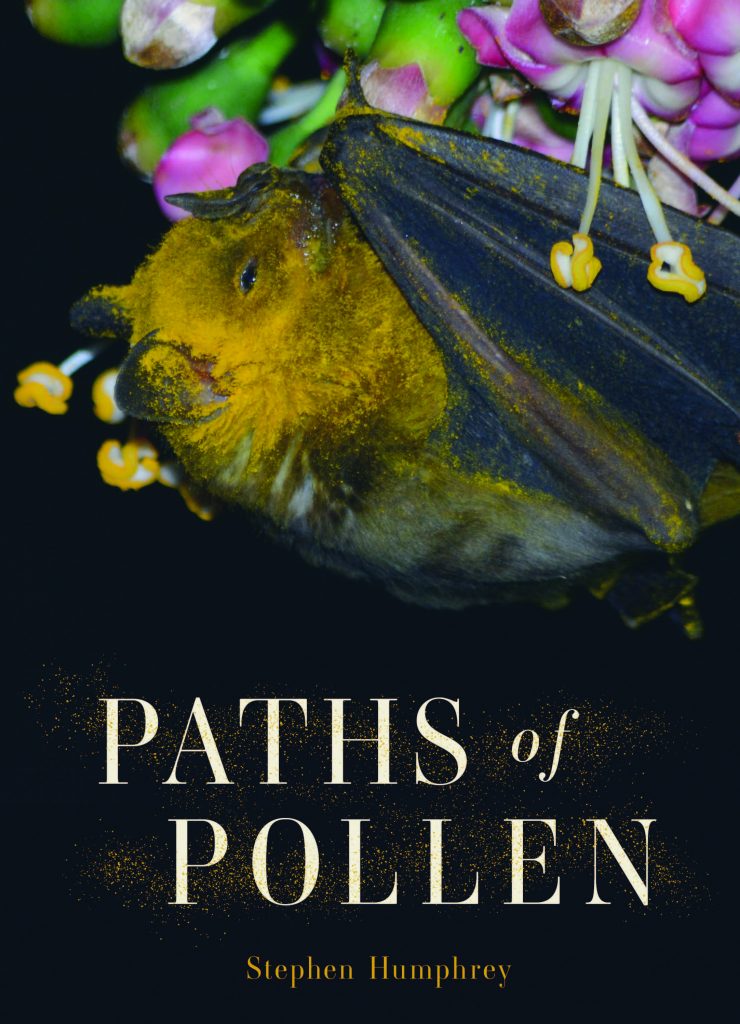It’s complicated, man – how I learned pollination is complex, and why it needs to be – by Stephen Humphrey
824
I sometimes have mixed feelings when friends introduce me as the author of “the bee book.” On the one hand, I’m touched that they’re so eager to be supportive. But then I have apprehensions over what’s going to happen when someone has a look at Paths of Pollen and finds out my “bee book” has a bat on the cover.
This was not a design error. The furry flying mammal, a common fruit bat, wonderfully demonstrates the book’s main topic, pollination. The bat’s face is caked with pollen after gorging on pollen and nectar from some Central American plant. That pollen will journey with the bat to another flower, which it might possibly fertilize. This will consummate the sex act between two plants, and generate seeds and fruit. Voila, pollination! Many popular fruits come from bat pollination, such as mango, banana and guava fruits. Bats also pollinate agave, the botanical source of tequila.
Of course bats don’t know they’re pollinating fruit trees or advancing the liquor trade. Pollination is a trick played by plants to make small flying creatures transport their sex cells. Flowers entice pollinators with bright appealing colours, intoxicating odours and the promise of sweet rewards. Sometimes it’s a false promise. Certain flowers offset the metabolic cost of producing nectar by simply not making any. Lady’s slipper orchids resemble pink ballet slippers, with dangling straps. These sweet-smelling, whimsically beautiful flowers, are dirty tricksters that promise nectar they don’t have. When little buzzing creatures, like bumblebees, fall for their ruse, the flowers trap them, forcing the pollinators to squeeze out through narrow openings, which press sticky packets of pollen on them.

Despite my protests at the start, it didn’t take me long to bring up bees, did it? And no wonder. While fruit bats move prodigious amounts of pollen in parts of South and Central America, bees pollinate plants on every continent but Antarctica. They’ve had a close connection with flowering plants since 130 million years ago, only 10 million years after flowers first evolved. Certain wasps, carnivorous cousins of bees, discovered pollen as a protein source, and became the first bees. Bees, and their flower-focused food gathering, along with other pollinating species, helped flowering plants conquer the world so quickly that Charles Darwin called their precipitous rise an “abominable mystery.” Bees have also diversified. There are currently more than 20,000 known species.
Just as Darwin freaked out over the rapid radiation of flowers, I was initially shocked to find out bees were so diverse. Like many people, I spent most of my life thinking there was one, maybe two kinds of bee: bumblebees, honeybees and that was it. When my mother married a beekeeper in western Canada, I developed a fascination for honeybees—their social sophistication, their improbable dance language and their reputation as skilled pollinators. I longed to write about bees, especially when, all of a sudden, the news was saturated with headlines about a honeybee apocalypse, or more accurately, a honeybee rapture. Workers were disappearing from hives en masse in Europe and the United States, leaving behind helpless queen bees and untended larvae.
I managed to get a substantial grant to learn about bees—not even a science grant, but a writing grant. I quickly found things were more complicated. Only ten or so bee species out of 20,000 are honeybees. Nor are honeybees native to North America. They’re exported livestock, shipped all over the world to make honey and pollinate crops. The global honeybee trade has introduced pathogens, such as varroa mites, which played a big part in headline-grabbing honeybee die-offs. But while commercial honeybees have largely weathered this blight, native bees are also vanishing, such as Franklin’s bumblebee and the rusty-patched bumblebee, two bee species once common in North America.

Worldwide there are 250 bumblebee species, such as Europe’s buff-tailed bumblebee, but 250 hardly makes a dent in the grand total of 20,000. So what are all the other ones? Most bees, it turns out, are small, dark and nondescript. They resemble ants more than any popular conception of bees. This comparison is not unfair, since bees (and wasps) are related to ants. But then we get the weird ones. Bee scientist Laurence Packer travels the world, seeking new and exotic bees. One time, Packer showed me Xeromelissa rozeni, a stretched-looking bee with an odd, elongated head he found in a Chilean desert. This strange bee’s body evolved for crawling down into desert flowers, which hide their nectar deep. Forget bumblebees or honeybees buzzing through pleasant, rustic meadows. Some bees live austere, solitary lives in the world’s harshest deserts, like the Atacama.
Most bees, Packer explained, don’t have hives, queens or honey reserves. They dwell alone in hollow stems, holes in the ground or cavities in human structures. Luckily my friend, installation artist Sarah Peebles, created a structure that allowed me to view solitary bees, as well as film and photograph them. Sarah’s “bee booths” have Plexiglas panels to watch solitary bees (and solitary wasps) at work in their tunnels. One can also hear them with specially designed microphones. I have hours of footage from these miniature studios, of leafcutter bees, which fashion leaf pieces into objects like hand-rolled cigars. These single mothers of the bee world pack pollen into those leaf cells, with enough protein for their offspring to grow from larvae to adult bees. Seeing is believing, and I finally believed the existence of solitary bees.
But what about pollinating flies? One day I sat with pollination biologist Peter Kevan, as he broke down the not-so-basic basics of pollination. Before he even mentioned bees, I heard about butterflies and moths, hummingbirds and wasps, flower-feeding beetles (potentially the earliest pollinators) and all kinds of flies. Kevan’s graduate work in the 1970s concerned hardy little flies that pollinate Arctic plants. Later, I spoke to Jeff Skevington, an expert on “flower flies,” about pollinating flies that look like bees, such as Narcissus bulb flies, which are dead ringers for bumblebees, and drone flies, which remind me of common flies hand-painted yellow and black. One of these bee mimics was mistakenly featured on the 2014 cover for Bees of the World.
But then we have plants with no pollinators at all. About 20 percent of plants spread their pollen by wind, such as grasses, birch trees and pines (which mate using cones, not flowers). It finally dawned on me, you can’t tell the story of pollination without knowing plants and flowers, their reproductive engines. Flowers are far from simple. They’re complex living contraptions, designed for polyamorous sexual escapades involving multiple genitalia and hermaphroditic parents, which sometimes pollinate themselves. These biologic machines have a crazy range of methods to get pollinated. Just look around and see how many different flowers there are—their different sizes, smells, colours and shapes. Some species are immense, such as the Indonesian corpse plant. The plant’s enormous, bruised-coloured flower, has a three-meter cone growing from its centre. This structure broadcasts the smell of rotting flesh to entice beetles, flies and other carrion feeders. Different plants have tiny flowers, like those in the spurge family, which accommodate Perdita minima, the smallest known bee. Some flowers have incredibly simple, bowl-like shapes, while others, like blue flag irises (which can service three pollinators at once) are positively baroque.
At some point, during this mind-expanding course of learning, I realized complexity was not just unavoidable, but necessary. I started to see things at the scale of ecosystems. Go look at a meadow, a jungle, or even a so-called “barren” place like desert or Arctic tundra, and just take in the variety of things growing and blooming there. This picture is not complete without mobile organisms, the pollinators that visit all these flowers. In the Chihuahuan desert, which straddles the American southwest and northern Mexico, tiny bees from the species Perdita portalis sleep in cocoons, not hatching out until globemallows bloom, which only happens after one of the desert’s infrequent rainfalls. Every blooming flower has some story like this, perhaps not involving such epic patience, but certainly of longstanding connections between pollinators and plants. Nor does the story end with pollination. Outside the plant-pollinator loop, other species feed on leaves, fruits and seeds, depend on plants for cover, shelter, or places to mate, sleep and find prey. The web of interdependence is vast.

I still haven’t found an endpoint for the story of pollination. It keeps revealing more complexity—necessary complexity, to sustain multiple, interconnected lives. Sadly, the world’s ecosystems are also losing diversity. This trend includes plants and pollinators. In 2019, scientists announced 571 plant species had gone extinct over the past three centuries. A European study published in 2017 warned the world has 75 per cent less insect biomass since 1989. Species of our beloved fruit bats range from “threatened” to “critically endangered” (which is fancy talk for close to extinct).
The more biodiversity suffers, the more fragile ecosystems become. Scientists at the Georgia Institute of Technology worried over deficits of “landscape resiliency” in ecosystems they studied. The longer plants reside in places, the more diverse they become and the faster they recover from disturbance. Sadly, say the scientists, too many habitats are too young. We have forests, but not as many old forests. There are grasslands, but those grasslands are less biodiverse. It is harder for younger, less diverse ecosystems to build back up when they’re knocked down. The scientists warn of “foreboding potential extinctions to come.”
At this point of my learning, I can see it’s not enough to know about one narrow subject, or one species, or enough to try and save just one species. A botanist I interviewed told me, “It’s complicated man,” referring to plant sex. So is ecology. Vive la complexité. It’s the thing we need most.

Author Bio
Stephen Humphrey is a writer, radio contributor, and citizen naturalist, based in Toronto, Canada. He has worked on audio documentaries, which include “Planet You,” about the human microbiome, “Generation Mars,” concerning space travel, and “Dancing In The Dark: The Intelligence of Bees,” which was short-listed for the prestigious New York Festival Award. His five-line bee poems, accompanied by videos, are part of the living art project, Resonating Bodies. He contributes to pollinator conservation projects such as South Parkdale Community Pollinator Gardens and Project Swallowtail.
Order online at www.mqup.ca (except UK & Europe) or directly with the distributor in your area
Canada UTP Distribution 1-800-565-9523 utpbooks@utpress.utoronto.ca
USA & Rest of World Chicago Distribution Center 1-800-621-2736 orders@press.uchicago.edu
UK & Europe Marston Book Services Ltd. +44 (0) 1235 465500 trade.orders@marston.co.uk




